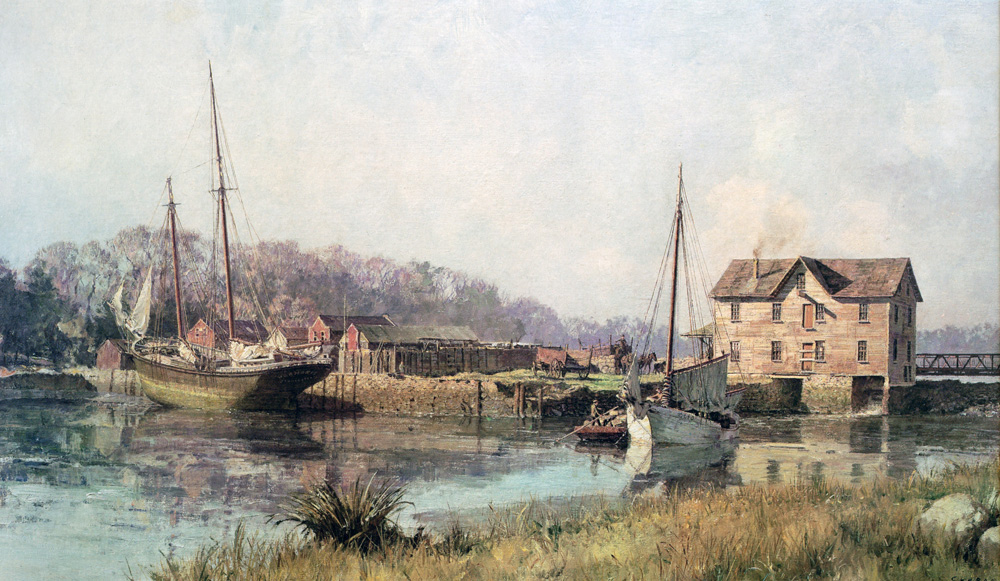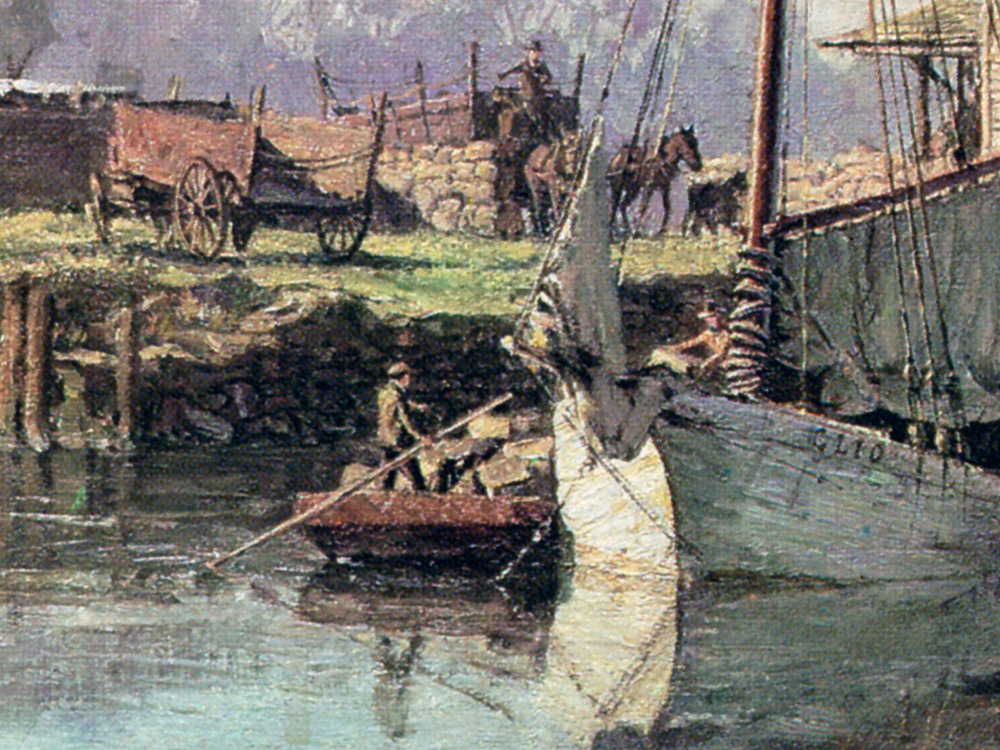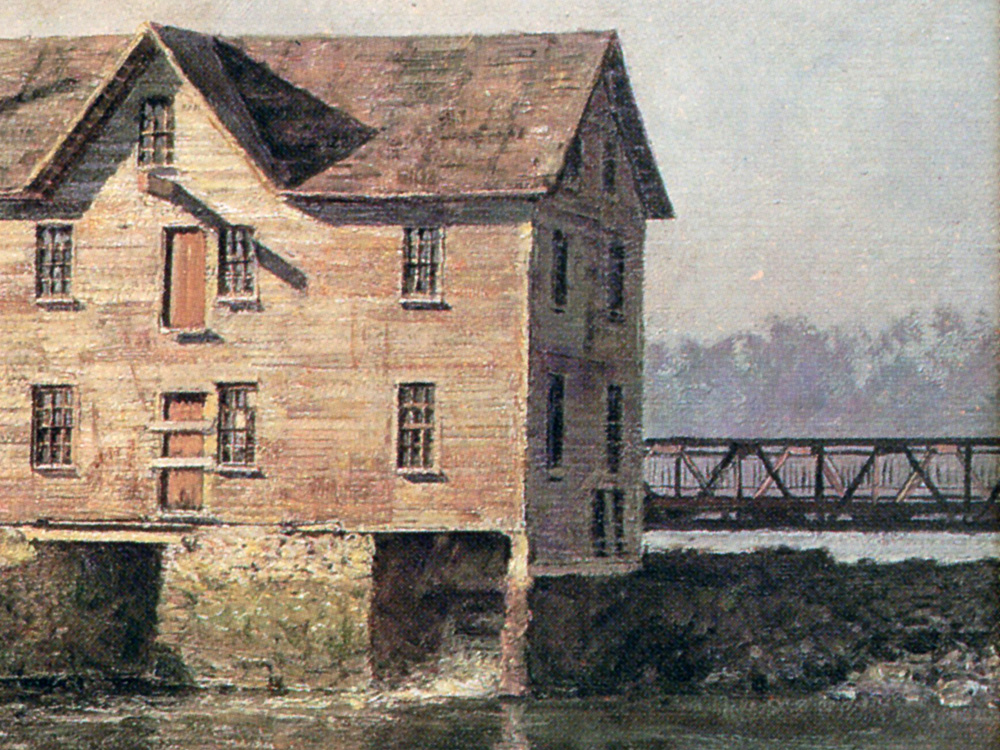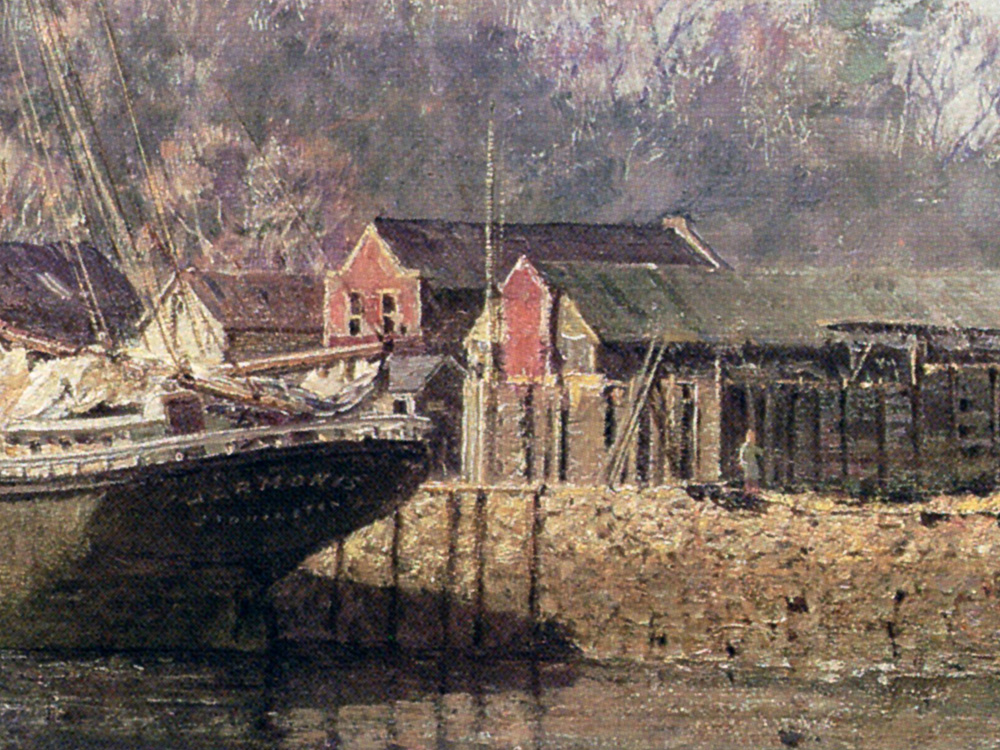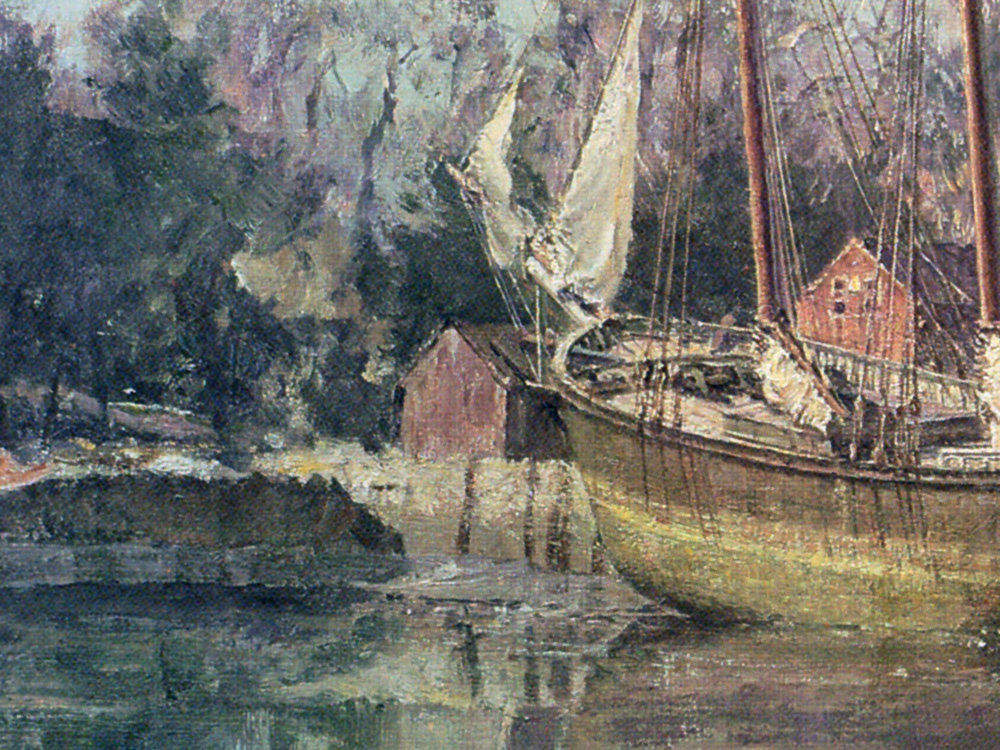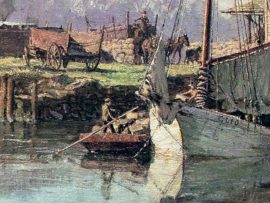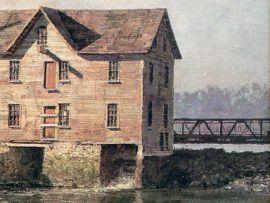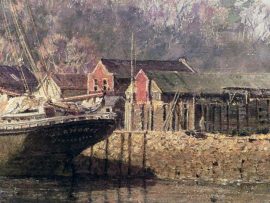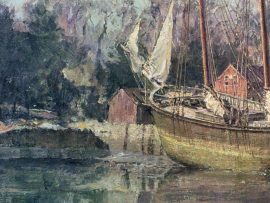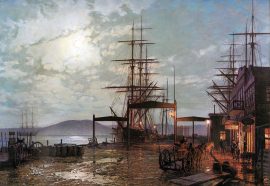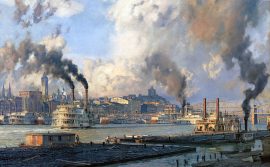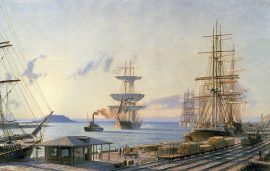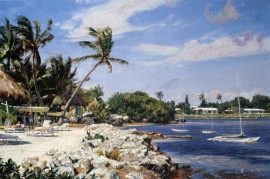Darien: Rings End Landing in 1900
$2,400.00 Original price was: $2,400.00.$2,160.00Current price is: $2,160.00.
Ring’s End, Connecticut, was a typical example of a New England trading town. Most of these communities were set up the same way; a pond, a dam for waterpower, the mill, a coal yard, three or four stores, each with a dock, and a cluster of houses for the local entrepreneurs.
The merchants were bankers, factors, ship owners, and fishermen; these flexible souls switched occupations depending on the season, but always seeking the coin. They were the first rural capitalists or, some might say monopolists. These men controlled the destinies of nearly everyone in the area, for in a trading town the merchants had the capital to buy the local produce, then ship it abroad their own vessels and sell it for a profit at the closest market – in the case of Ring’s End, New York . When these merchant-skippers sailed their sloops back to Ring’s End, they were loaded with goods for the stores they owned, which were patronized by the local farmers. In their banking capacity, these Yankee sharpshooters lent or factored crops with cash. These funds, plus the loan interest, would be recycled to the merchants in the general store trade.
Originally a part of Stamford, Darien became Middlesex parish in 1737 and was incorporated as Darien in 1820. About one thousand residents lived in the area to serve the export trade. The center of town faced Gorham’s Pond. The first mill, called Scofield’s, was built in 1708. Another mill was built for the Clock family and eventually taken over by Gorham’s in 1740.
During the American Revolution the Tories of the area left quickly for Long Island. They returned by sloop one night and for vengeance they captured forty-eight men during the local town meeting. The captives were taken down to New York and imprisoned for five months. This is about the most exciting thing that ever happened at Ring’s End Landing.
The railroad came through Darien in 1848, and gradually the center of the town moved away from the water and closer to the main highway, Route One, and the local railroad station. But trading by water continued until World War 1.
The mill remained on Gorham’s Pond for many years after it ceased to grind flour. In 1921, so the local story goes, the town decided to test its new fire engine, which the manufacturer claimed was guaranteed to extinguish any blaze if reached quickly. The townsmen set the mill afire, confident that the damage would be minor with their new, powerful fire engine standing by. Something went wrong, because the landmark of Darien burned to the ground. That was the end of the Ring’s End Landing that had been a small, but vital hub for over two hundred years.
Out of stock
| Weight | 6.00 lbs |
|---|---|
| Catalog: | Stobart-043 |
| Artist: | John Stobart |
| Dimensions: | 17 1/2" x 30" |
| Edition: | 250 |

